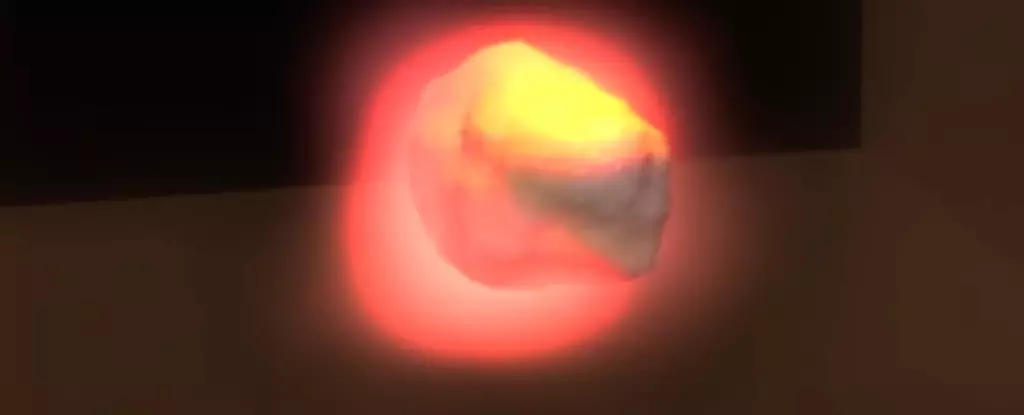NASA’s Curiosity rover has recently made significant strides in the quest for extraterrestrial life by identifying the largest organic molecules discovered on Mars to date. This remarkable find is not just an incidental addition to a growing list of scientific data; it represents a pivotal moment in astrobiology, reshaping our understanding of the Martian environment. The long-chain hydrocarbons, potentially fragments of fatty acids analogous to those Found in biological membranes, imply that Mars might once have harbored conditions conducive to life. While the prospect of microbial life is enticing, these findings provoke a deeper inquiry into the mechanisms that could have allowed such molecules to form on the red planet.
The Nature of Organic Molecules on Mars
The organic molecules unearthed by Curiosity come from a rock known as Cumberland, located in Gale Crater—a formation believed to have been a lakebed roughly 3.7 billion years ago. This ancient ecological landscape, paired with the chemical signatures derived from the sample analysis, suggests that Mars might not just be a barren wasteland, but a planet with a storied past ripe for exploration. The team utilized the rover’s Sample Analysis at Mars (SAM) instrument, initially aimed at finding amino acids, only to stumble upon hydrocarbons like decane and dodecane instead. Each of these alkanes is a fundamental chemical building block that ties back to potential biological processes.
The discovery of these hydrocarbons is far from trivial; it opens up discussions about their origin. Are these molecules remnants of biological activity or results of non-biological geological processes? The duality of these possibilities makes the findings simultaneously thrilling and perplexing. Each new piece of information serves to heighten curiosity and uncertainty, inviting experts to reassess most previous assumptions about Mars’s climatic history and its viability for life.
Cumulating Evidence from a Lakebed
The Gale Crater’s geological formations bear a striking resemblance to those created by sediment accumulation at the bottom of a terrestrial lake, making it a prime target for astrobiological investigations. If ancient lakes existed, the conditions may have provided a nurturing environment for microbial life, leading to the formation of complex organic molecules. The carbon compounds identified in the Cumberland samples may be ancestral echoes of the fatty acids so critical in terrestrial lifeforms.
Moreover, the inquiry into fatty acids extends beyond basic biology; understanding how they might have formed on Mars could aid in delineating a biosignature—chemical evidence of past life. While these findings are compelling, they are also layered with complexity. Indeed, the same molecules could arise from abiotic processes, highlighting the need for further investigation. Such ambiguity necessitates more advanced scientific tools capable of differentiating between biologically derived and non-biologically derived organic molecules.
The Future of Mars Exploration
The ambitious Mars Sample Return mission, a collaborative effort between NASA and the European Space Agency, promises to enhance our understanding of these discoveries. By bringing back rock samples to Earth, scientists will have the opportunity to employ sophisticated analytical techniques that are impossible on a rover. However, the mission faces logistical and budgetary challenges, as recent reviews have criticized the increasing financial commitment required to see it through. The ability to analyze Martian materials in controlled environments could finally provide clarity on the organic molecules’ origins and the potential past habitability of Mars.
It’s a thrilling time in extraterrestrial research, buoyed by Curiosity’s striking revelations and supported by Perseverance’s collection of samples from diverse Martian terrains. As debates surrounding budget allocations and mission strategies continue, the stakes are high in securing our path forward in unraveling the mysteries of our neighboring planet.
Intriguing Chemistry Under Harsh Conditions
The geological history of Mars is a mosaic of environmental shifts, many of which remain enigmatic. The presence of organic molecules persists as a tantalizing potential indicator of life amidst the planet’s presently inhospitable conditions. Curiosity’s findings bolster the case for Mars as a former cradle of life. Investigating these organic remnants opens a window into understanding not only the past ecosystem of Mars but also the broader mechanisms that govern habitability across the cosmos.
Astrobiologists are now faced with a tantalizing conundrum: how can evidence so distinct and mature be attributed to life, yet elude categorization within strict biological parameters? The duality and complexity of Martian chemistry fuel ongoing debates within the scientific community, urging researchers to push the boundaries of our existing paradigms. While skepticism remains, so too does hope—a hope underscored by the resilient endeavor of humanity to understand its place in the universe.

